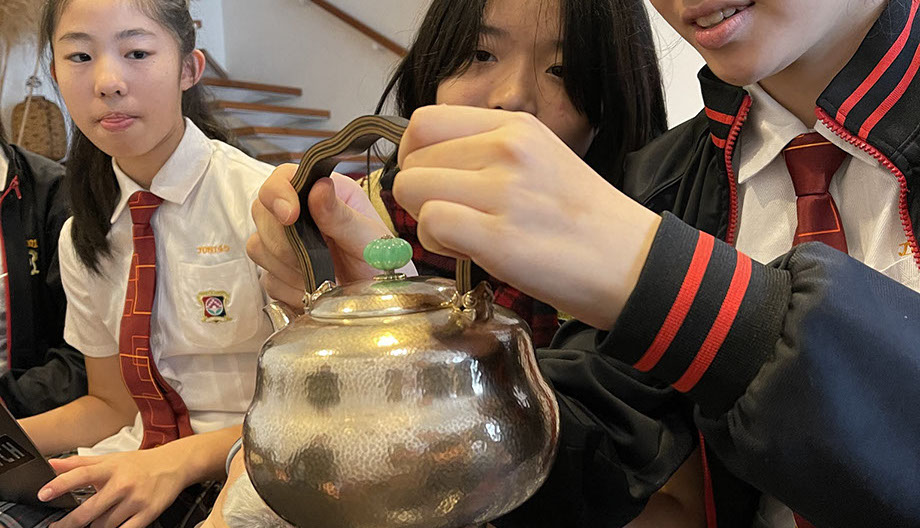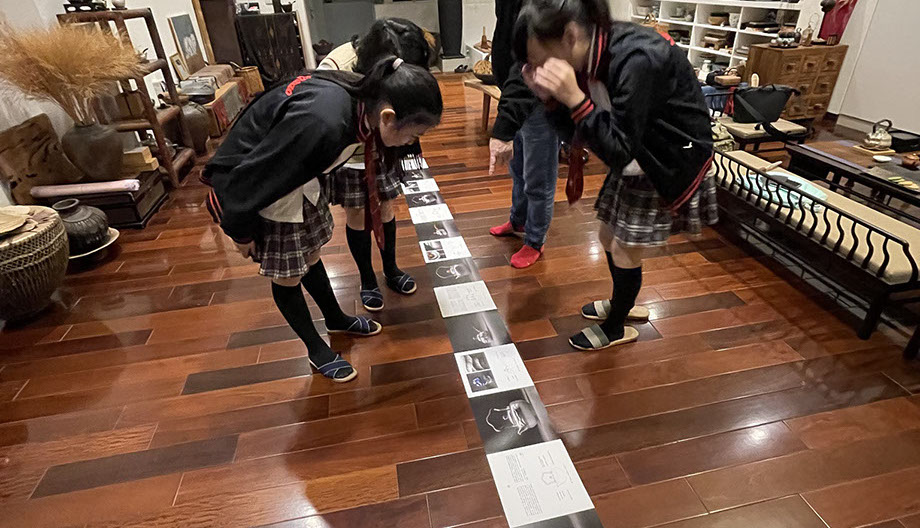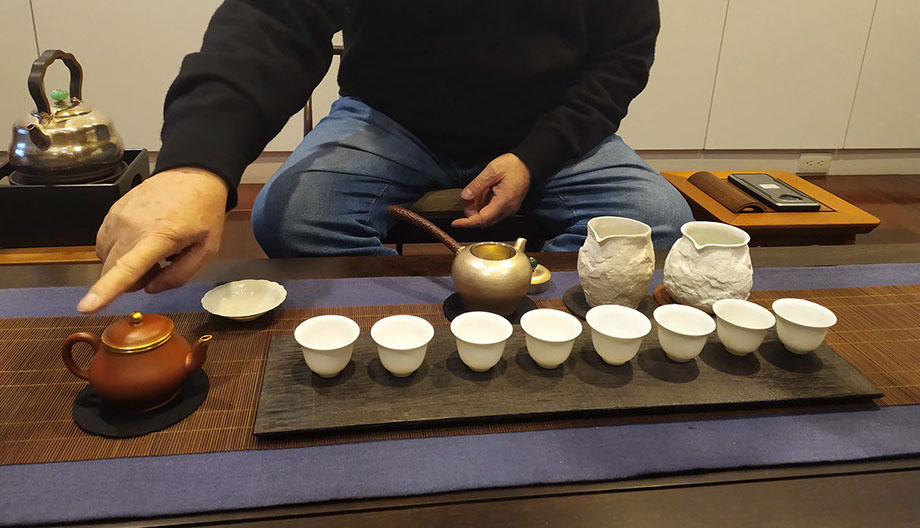![]()




<
>
OVERVIEW
Our Community:
Taiwan is a beautiful island with ecological diversity and extraordinary artworks. Taiwan is surrounded by sea in the Eastern part of Asia and the Western Pacific Ocean. Located on the boundary between the Eurasian Plate and the Phillippine Sea Plate, Taiwan is extruded by the plates. As known as the “castle in the mountains'', our school pays a lot of attention to students' learnings of the artistic aspects, there are many opportunities for us to learn art in school. For instance, we have a performing art class every week, in which we can choose an art-related subject to learn. Apart from that, we also have in-school clubs and after-school clubs which are related to art, such as instruments and drawing. These classes can draw the inheritance of Taiwanese culture and art. Therefore, we are going to get people to know about our tea culture and teapot culture through this project.
Summary of Our Project:
Project Description: (briefly describe your project):
Tea is an important part of Chinese culture and daily life. In order to have a cup of delicious tea, a good teapot is needed. In Taiwan, we use Chinese and Japanese teapots, but the tea and the way we use it is different than in Japan or China. One of the best teapot makers in Asia, Nien-chou Chen, starts studying a suitable teapot for Taiwanese because he is a Taiwanese and he’s also a tea lover. He believes a good tea is when the water runs through gold and silver, which makes the water sweater and the quality of the water better, so he tries to develop a teapot made of silver or gold. He then starts thinking about the shape of the teapot, he thinks that one handle teapot suits the best with ergonomics and the leverage makes it easier to use. Lastly, he considers the looks of the teapot, he uses many sites or culture from Taiwan to be the concept of the teapot, and he also uses creativity for the colors, and decorations on the teapot. With expensive materials and beautiful teapots, he sold out one of the most expensive teapots in the world. We are carrying this Taiwanese culture forward to the whole world.
Cyberfair Theme~ Understand & Unite:
The theme of our project is to learn about the teapot’s culture in Taiwan. Although tea culture comes from China, we can see tea in our daily lives. We can see people drinking Taiwanese tea or making tea related products, but there are no exclusive Taiwanese teapots. When we found out this problem, we researched on this topic and we found Tr. Nian Zhou Chen, the first teapot maker who made a teapot which is suitable for Taiwanese people. So the theme of our research is about the teapot culture in Taiwan and Mr. Nian-Zhou Chen’s “Legend of teapot”.
Our Computer and Internet Access:
Percentage of students using the Internet at home: 30-50%
Number of Workstations with Internet access in the classroom: 5
Connection speed used in the classroom: dial-up modem
Number of years our classroom has been connected to the Internet: More than 6 years Additional Comments: Our school provided us with a local optical network (100M), as nowadays technology has become so essential that it exists in almost every aspect of our life. Most of our work was completed during a period of time during winter vacation and also during club time. Google services such as Google Drive and Google Documents were used to assist us in organizing and editing our information.
Problems We Had To Overcome:
It is our first time attending CyberFair, even the group mates were not close to each other before this CyberFair. So, of course, we encountered several problems during our project, such as failing to contact the expert, computer technology issue, groupmates not cooperating, lack of time. Failing to contact the expert really got our group nervous, because that means we do not have any information to support our project. We were afraid that we may not finish the project. So we urgently find another expert to interview. Another problem is the technology issue, no one in our group has learned how to make an official website. Therefore, taking time to learn the technology cost both teachers and students a great amount of time. Consequently, we faced the problem of lacking time to do work. We want to do the project as perfectly as possible, however, the time we have restricts the quality of our project. So we made a proper plan to solve it. Fortunately, our group collaborated and went through all of these difficulties. We are more mature and mannered than before. We think we can do better and more efficiently in the future.
Our Project Soundbite:
After participating in this International CyberFair, our team understood the importance of teamwork, communication, and interaction with people. CyberFair also allows us to learn and exchange different cultures with other countries. This experience has also improved many functions, which can be of great help to us in the future. Our collaboration, research, critical thinking, problem-solving skills, and most importantly, our willingness to discover knowledge. What I learned by participating in CyberFair far exceeded my imagination. This is such a valuable experience, and I have learned many lessons.
Which content standards did your CyberFair project address?
This project taught us the strategies of how to collect information efficiently, analyze data thoroughly, organize the information correctly, and present and communicate it clearly to people. These skills are being used frequently every day whether in school or in life, these crucial skills really helped us do work more effectively. Our school applied IB learner profile, in which we all become a thinker, risk-taker, communicator, and inquirer in this year’s CyberFair. Our topic this time is Taiwan’s tea culture, furthermore, we learned to preserve our own culture. We understand more related knowledge about the teapot, including its history, origin, and different countries' teapot. We used the internet to make our website to introduce the teapot and Mr. Nian-Zhou Chen, which allowed everyone to see it. If we do it in a traditional way, it might not allow as many people to see as on the internet.
